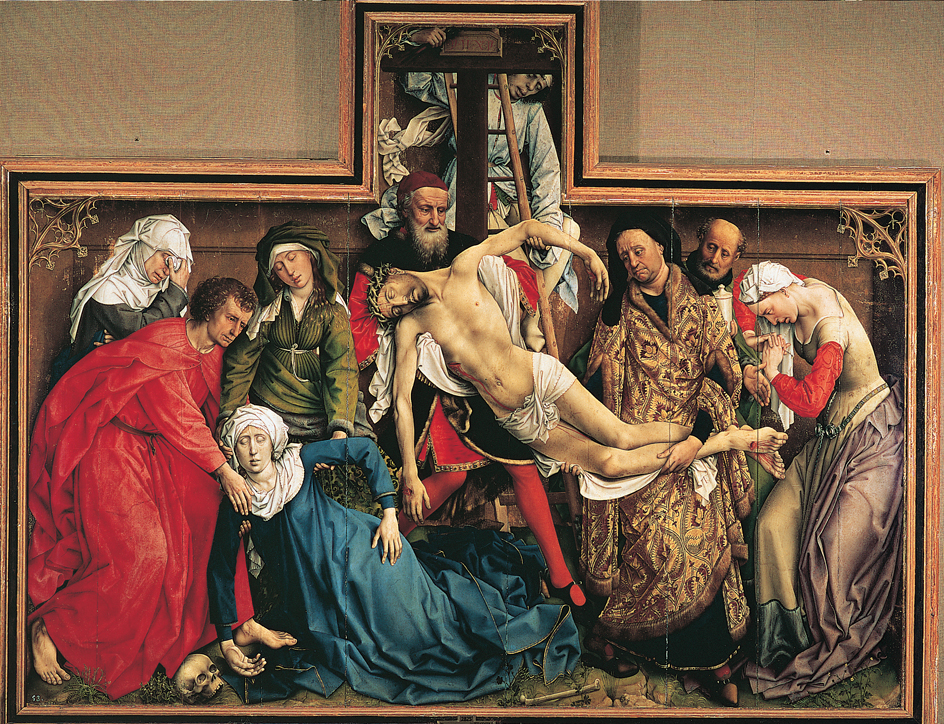Van der Weyden, Rogier, << van duhr VYD uhn, roh GEER >> (1399?-1464), was a Flemish painter of portraits and religious subjects. In his religious paintings, van der Weyden focused attention on the emotional responses of elegant and graceful groups of figures. But the artist also distanced the viewer from the intensity and immediacy of the religious experience in a variety of ways. For example, he sometimes placed his figures against a gold background, as in The Descent from the Cross (about 1435). In some paintings, he deliberately avoided integrating the figures into the detailed setting, often arranging them to create a rhythmic surface pattern. Some paintings include painted sculptural archways that function as frames for the subject matter.

Van der Weyden was born in Tournai, in what is now Belgium. In the 1430’s he moved to Brussels, where he was appointed “painter of the town.” His workshop included many apprentices and his style influenced Flemish, German, and French art for many years. His portraits for the court of Burgundy preserve the haughty manner and proud bearing of the Burgundian nobles. He died on June 18, 1464.
